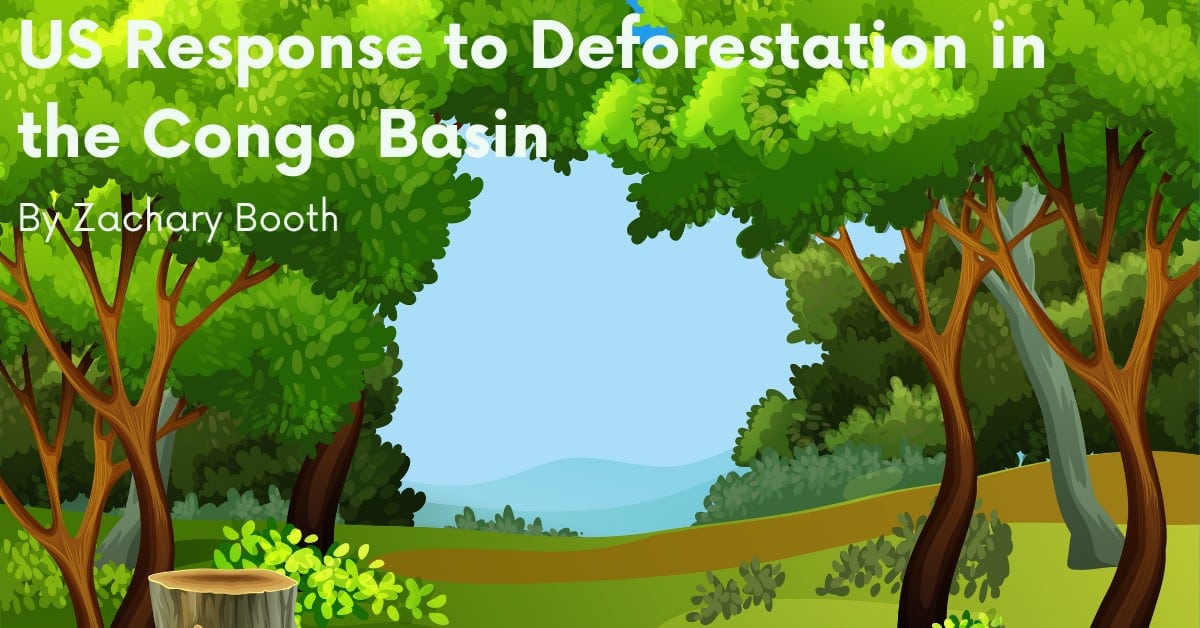Cobalt, originally seen as a simple byproduct of copper or nickel mining, has recently become a critical mineral due to its use in lithium-ion batteries. These batteries are lightweight and rechargeable, and are important features in portable technology and energy grids. Cobalt’s demand is on the rise as eco-friendly technology, made possible with rechargeable batteries, provides an alternative for fossil fuels. The International Energy Association’s special report on critical minerals predicts that cobalt will see over a 60% rise in demand as countries attempt to meet the Paris Agreement’s emission goals.
Much of that cobalt comes from the Democratic Republic of Congo (DRC) as the central African nation is home to over 70% of the world’s cobalt production. Still, the country’s history of conflict and corruption has stifled economic development, resulting in widespread poverty and a substantial informal sector. These factors complicate involvement. While minerals such as cobalt provide an incentive for external investors and a symbol of potential prosperity, their coveted nature can lead to conflict and further issues for those who participate in its extraction.
US Energy Demands and Domestic Production
Recent US policies reflect a demand for green energy and the corresponding necessary resources. In 2021, Biden passed the Bipartisan Infrastructure Law which included an emphasis on electrical vehicles and clean energy technologies. The following year’s Inflation Reduction act invested in new energy projects and other technology that uses cobalt. Investing in DRC cobalt mines could provide the foundational resources for many of the new projects. As part of these new pieces of legislation, the Biden Administration aims to focus locally and encourage internal markets for clean energy rather than relying on foreign powers with competing interests.
Because of this, some argue that the US should focus more on mining cobalt domestically. For example, Representative Strauber of Minnesota claimed that investing in Congolese projects both supports the pervasive human rights abuses and sacrifices domestic job opportunity. If the US can mine Cobalt domestically, then this would directly speak to Biden’s goal of a more domestic clean energy industry. However, local mining has been expensive and inefficient with only three projects opening since 2002. One project in the Idaho Cobalt Belt took over 20 years to begin production. Through these mines, the US was able to produce 700 tons of cobalt in 2021, but it still had to import 9,900 tons to match demands. Increasing involvement within the DRC could help address the rising need for cobalt and avoid dealing with potential rivals.
Competition with China
The most prominent rival is China, who dominates cobalt mining in the region. Chinese corporations provide infrastructure investments in exchange for mining opportunities as a way to expand influence and secure control over early stages of the energy supply chain. In 2005, then-DRC president, Joseph Kabila, negotiated with China to reach a $6 billion infrastructure deal to fund schools, hospitals, and roads in exchange for copper and cobalt. As of 2023, China owns all but one cobalt mine within the country.
Even so, the Congolese people often feel exploited by current contracts with the Chinese and hope to secure a more equal partnership. Reflecting this new goal, the DRC is looking to re-negotiate the aforementioned infrastructure-for-minerals deal. In 2022, the DRC government began investigating Chinese mining companies for evading payments. One such investigation resulted in restricting China Molybdenum Co.’s control of the Tenke Fungurume mine. The recent pushback against China may also spur an effort to find new partnerships with countries such as the US.
In a May 2022 speech, Secretary of State Antony J. Blinken characterized the US strategy towards China as one of economic competition for both technology and foreign influence. Investing in the DRC’s cobalt mining would increase US power in both. Currently the US is not a dominant player in either the production or the raw material side when it comes to battery technologies, and the DRC’s dissatisfaction with China is an opportunity for the US to improve its position in the energy supply chain.
Already, the US has attempted to expand connections to the DRC through a Memorandum of Understanding focused on electric vehicle batteries. This agreement between the DRC, US, and Zambia expresses a shared interest in improving growth within the African countries’ mining and industrial sectors. However, the memorandum does not include any legally binding components or funding, making the agreement more symbolic than functional. Moreover, the US is starting at a disadvantage when it comes to controlling mines since it sold the one American-owned DRC cobalt mine to China in 2016.
Human Rights Abuses
The US is hesitant to increase ties with the DRC’s mining industry because of the many current human rights abuse scandals. NPR has referred to the cobalt mining projects within the DRC as modern day slavery due to the extreme poverty and coercive forces leading people into the mines. New projects displace villages, leaving the people at risk of homelessness and often creating situations where the only economic opportunity is to work in the mines The slave-like conditions are part of a process called artisanal mining which is done informally and without heavy equipment. Artisanal miners then sell their resources to industrial mining companies. The inhumanely acquired resources enter the formal supply chain through money laundering, untraced and unquestioned.
To address this issue, the Fair Cobalt Alliance works to improve labor conditions for artisanal miners and harness their production to create a more formal supply chain. American corporations such as Google have invested in the project, suggesting an avenue for US soft power and influence within the region. Other multinational corporations involved in the mining process include Microsoft, who has “committed to responsible and ethical sourcing” of cobalt and Apple, who aims to decrease reliance on mines altogether due to the history of inhumane conditions. These actions by larger companies apply pressure to DRC mines to improve labor standards and lay the groundwork for future relationships.
Even so, the DRC has not met the US’s standards for eliminating human trafficking and is on the US Department of State’s watchlist. Trafficking also often leads to child labor, which the US has made efforts to address. The Combating Child Labor in the Democratic Republic of the Congo’s Cobalt Industry (COTECCO) project focuses on child labor in artisanal mining and trains DRC representatives to combat the issue. By expanding its engagement in the mining sector and at a national level, the US has the potential to tackle issues at both the policy and corporate levels. Such an undertaking is both expensive and time consuming when the US has historically utilized less controversial partners such as Norway and Canada for cobalt.
FTA Opportunity
The US could improve trade with the DRC directly through a Free Trade Agreement (FTA) as this would deepen ties between the countries and allow for additional benefits under Biden’s Inflation Reduction Act (IRA). Through expanding trade agreements with the DRC, the US can incentivize closer ties and provide subsidies or tax cuts around targeted resources to ensure American companies are some of the most compelling buyers. As it stands now, the IRA pushes the DRC away because many of the plan’s critical mineral subsidies are restricted to countries with FTAs.
FTAs can also incorporate explicit incentives to advance specific policy objectives that the US aims to tackle in a given country. For instance, the US’s FTA with Peru contains specific environmental goals to minimize deforestation. An FTA with the DRC could incorporate guidelines that directly address human rights abuses within the mining sector. There is also an incentive to include an environmental component similar to the Peruvian FTA as current DRC mining has resulted in crop death and damaged soil within the surrounding areas due to cobalt’s toxic nature. Expanding mining projects within the Congo Basin also threatens the forest and surrounding ecosystems.
The cobalt mines within the DRC raise a complicated challenge. While the United States races against China for control of energy sources and technology, the inhumane conditions and ecological threats associated with congolese mining are heavy deterrents. Moving forward, the US must decide how to address the rising demand for cobalt without compromising its foreign policy goals.



